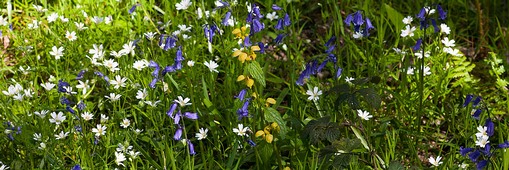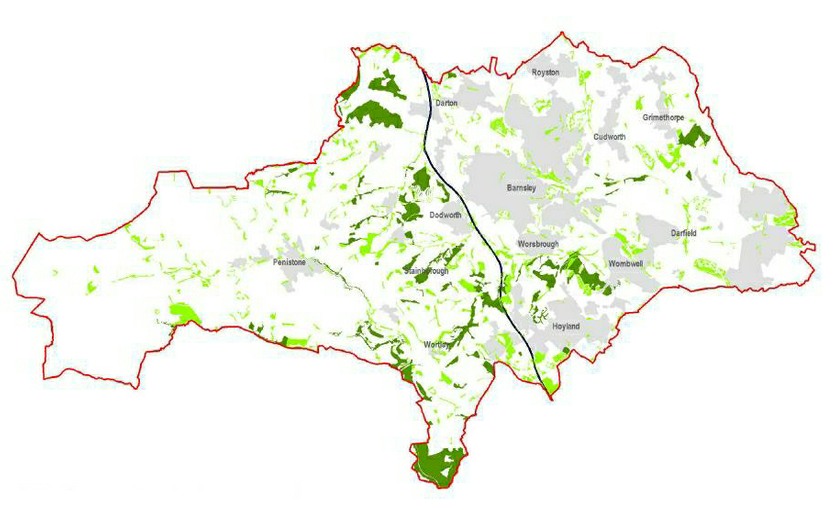

Biodiversity
Action
Plan


Distribution of woodland in Barnsley
Ancient woodland dark green
Other woodland light green
Map: South Yorkshire Forest Partnership
Ancient woodland. These woods, often with old names such as Hugset, Bagger and Silkstone Fall, are irreplaceable and given special protection in national planning policy. Just over half of woodland in Barnsley is ancient semi-natural woodland (18%) and ancient woodland sites with replanting (36%).
Ancient woodlands are known to have existed from at least the beginning of the 17th century before which woodland planting did not take place. Over the centuries they have developed distinctive soils, fungi, and plant communities. Two terms are used nationally to identify the types of Ancient Woodland:
Ancient Semi-Natural Woodland (ASNW) is mainly made up of trees and shrubs native to the area, often arising from natural regeneration.
Planted on Ancient Woodland Sites (PAWS). These plantations retain ancient woodland features such as undisturbed soil, fungi and ground flora.
Planning policy. The presence of either of these types of Ancient Woodland is a material consideration in planning applications. Ancient Woodland is identified specifically in the National Planning Policy Framework as irreplaceable, and Natural England and the Forestry Commission have produced Standing Advice.
How to identify ancient woodland sites
Natural England maintains an inventory of ancient woodland and old maps and records can determine if a site contains ancient woodland.
A list of plants characteristic of ancient woodlands in South Yorkshire has been produced by Professor Melvyn Jones. (See Ancient Woodland Indicators)
Ancient woodland often contains historic features such as boundary ditches and mounds, bell pits and remnants of charcoal hearths.
National planning policies give special protection for ancient woodland.
National Planning Policy Framework (NPPF)
NPPF paragraph 180c
Development resulting in the loss or deterioration of irreplaceable habitats (such as ancient woodland and ancient or veteran trees) should be refused, unless there are wholly exceptional reasons and a suitable compensation strategy exists.
Links
Woodland Trust:
Planning for Ancient Woodland;
How to identify anceint woodland
Natural England:
Standing Advice on Ancient Woodland Updated in 2022, it includes useful checklists
The Ancient Woodland Inventory is being updated in 2024. The minimum woodland size to be included is being lowered from 2ha to 0.25ha. Wood Pasture and Parkland is being included.
Sheffield & Rotherham Wildlife Trust are leading the AWI review for South Yorkshire. For more: AWI Update South Yorkshire.
Ancient Woodland